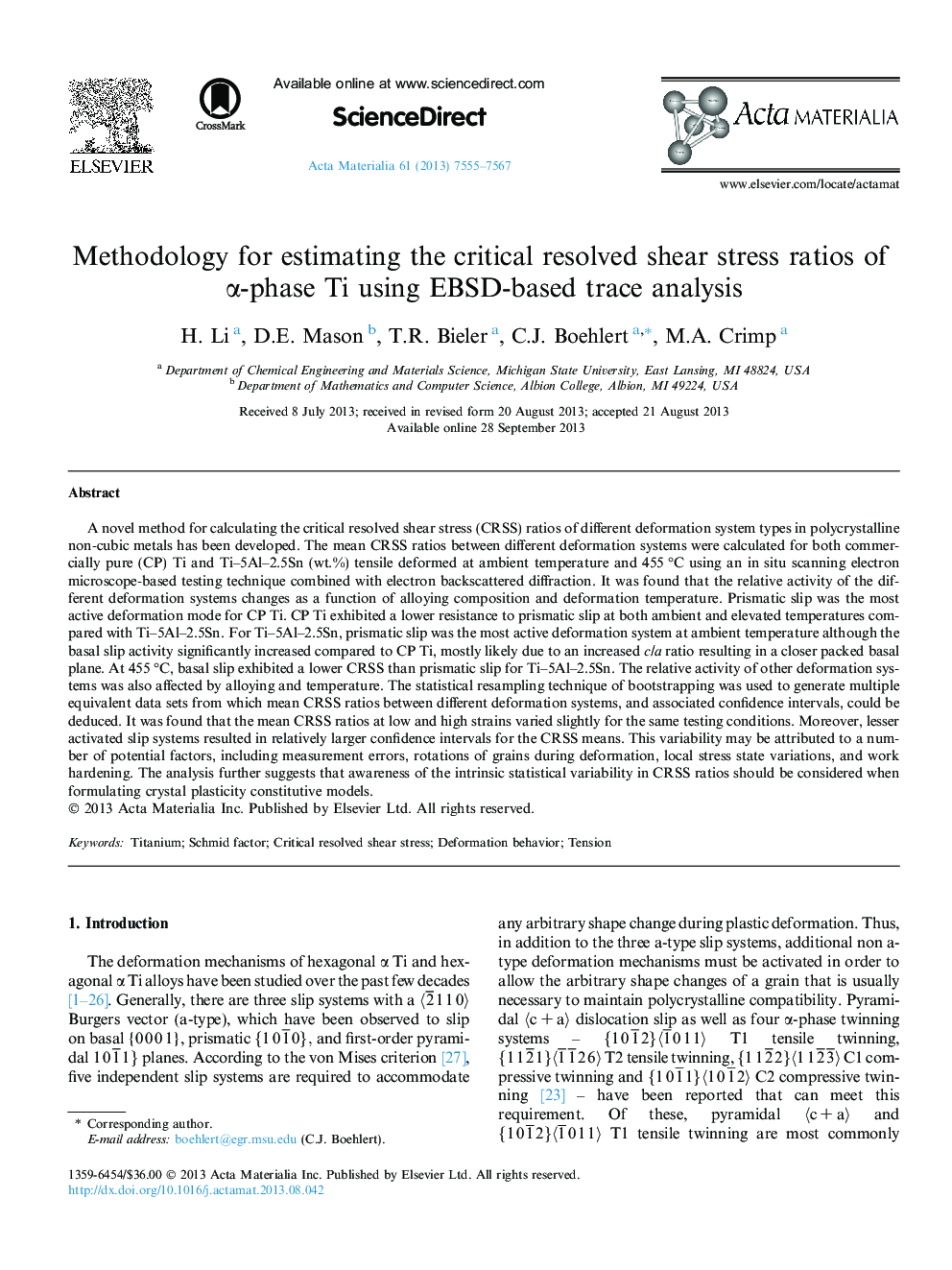| Article ID | Journal | Published Year | Pages | File Type |
|---|---|---|---|---|
| 1446177 | Acta Materialia | 2013 | 13 Pages |
A novel method for calculating the critical resolved shear stress (CRSS) ratios of different deformation system types in polycrystalline non-cubic metals has been developed. The mean CRSS ratios between different deformation systems were calculated for both commercially pure (CP) Ti and Ti–5Al–2.5Sn (wt.%) tensile deformed at ambient temperature and 455 °C using an in situ scanning electron microscope-based testing technique combined with electron backscattered diffraction. It was found that the relative activity of the different deformation systems changes as a function of alloying composition and deformation temperature. Prismatic slip was the most active deformation mode for CP Ti. CP Ti exhibited a lower resistance to prismatic slip at both ambient and elevated temperatures compared with Ti–5Al–2.5Sn. For Ti–5Al–2.5Sn, prismatic slip was the most active deformation system at ambient temperature although the basal slip activity significantly increased compared to CP Ti, mostly likely due to an increased c/a ratio resulting in a closer packed basal plane. At 455 °C, basal slip exhibited a lower CRSS than prismatic slip for Ti–5Al–2.5Sn. The relative activity of other deformation systems was also affected by alloying and temperature. The statistical resampling technique of bootstrapping was used to generate multiple equivalent data sets from which mean CRSS ratios between different deformation systems, and associated confidence intervals, could be deduced. It was found that the mean CRSS ratios at low and high strains varied slightly for the same testing conditions. Moreover, lesser activated slip systems resulted in relatively larger confidence intervals for the CRSS means. This variability may be attributed to a number of potential factors, including measurement errors, rotations of grains during deformation, local stress state variations, and work hardening. The analysis further suggests that awareness of the intrinsic statistical variability in CRSS ratios should be considered when formulating crystal plasticity constitutive models.
